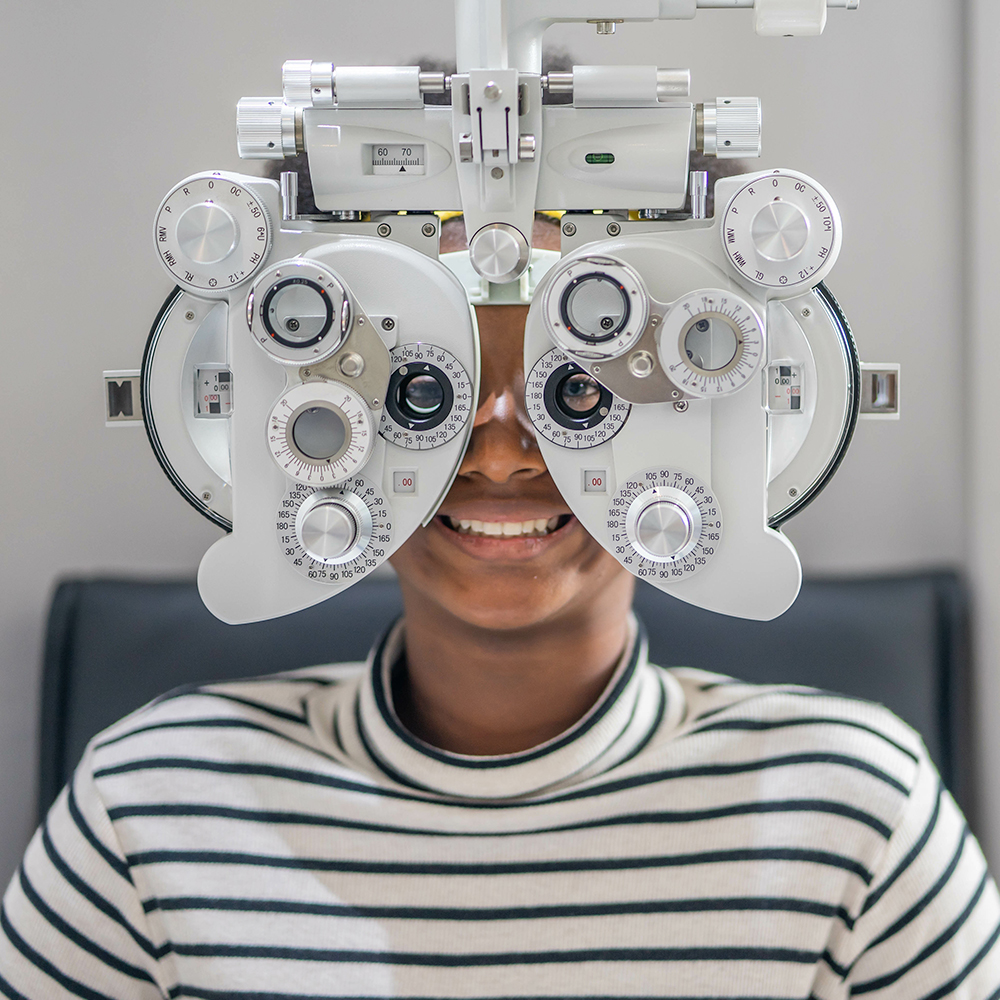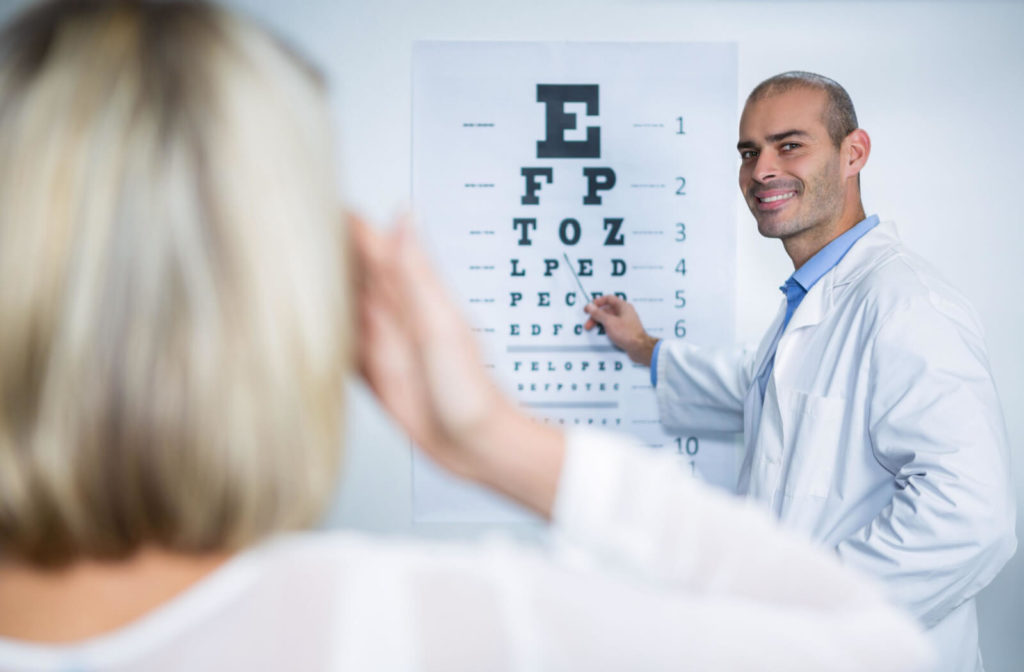Why Picking an Eye Doctor Optometrist is Essential for Your Eyes
Checking Out the most up to date Technological Advancements in Optometry and What They Mean for Optometrists
In the ever-evolving area of optometry, current technological innovations are improving exactly how experts approach eye care. From the precision of Optical Comprehensibility Tomography to the nuanced understandings provided by AI-driven analysis tools, these technologies are establishing brand-new standards in individual evaluation and treatment. Teleoptometry is poised to redefine ease of access, making sure that knowledge goes beyond geographical constraints. As these improvements permeate the method, eye doctors are faced with the obstacle of accepting these devices to improve individual end results. Yet, the question remains: just how will these technological shifts redefine the duties and obligations within the career?
Developments in Diagnostic Devices
Progressing the area of optometry, innovations in analysis tools have actually transformed the method eye treatment experts assess and identify eye problems and aesthetic disabilities. The past decade has actually witnessed substantial technological advancements, allowing more exact and thorough evaluations. Optical Coherence Tomography (OCT), for instance, gives high-resolution cross-sectional photos of the retina, enabling for the early detection of conditions such as glaucoma and age-related macular deterioration. This non-invasive imaging method has actually become indispensable in contemporary optometric technique.
One more trick innovation is the intro of innovative corneal topography systems, which map the surface area curvature of the cornea with precision. These devices are especially beneficial for suitable contact lenses and identifying corneal disorders. In addition, digital retinal imaging has transformed typical ophthalmoscopy, providing detailed, panoramic views of the retina that assist in comprehensive aesthetic examinations.
The advancement of wavefront aberrometry has likewise been crucial, allowing the evaluation of refractive mistakes with unmatched accuracy (Opticore Optometry). This technology assists in customizing corrective lenses and enhancing medical outcomes for refractive surgeries. Collectively, these diagnostic innovations equip eye doctors to provide remarkable person care, making certain early intervention and customized therapy approaches, eventually improving aesthetic health and wellness outcomes
AI in Patient Management
Structure on the foundation of advanced diagnostic devices, the unification of man-made knowledge (AI) in patient management stands for a transformative leap for optometry. AI systems are increasingly employed to enhance performance, precision, and personalization in patient treatment.
Moreover, AI-driven systems assist in structured client interactions and administrative processes. Automated scheduling, digital appointments, and individualized follow-up plans not just enhance person satisfaction but additionally optimize time management for practitioners. These systems can triage patients based upon the seriousness of their problems, ensuring that those in essential requirement get prompt interest.
Furthermore, AI boosts decision-making by offering eye doctors with evidence-based suggestions and treatment paths. By integrating data from digital health and wellness documents, AI tools offer insights that notify professional choices, reducing the risk of errors and enhancing person results. As AI remains to progress, its duty in person monitoring will likely broaden, improving the landscape of optometric treatment.
Developments in Retinal Imaging
In the world of optometry, retinal imaging has experienced impressive technological advancements that are boosting analysis capacities and patient care. Developments such as Optical Coherence Tomography (OCT) and fundus photography have reinvented just how eye doctors visualize and evaluate the retina. OCT, specifically, offers high-resolution, cross-sectional photos of the retina, enabling the detailed examination of its layers. This ability is invaluable for early detection and management of conditions like glaucoma, diabetic retinopathy, and age-related macular deterioration.
Enhanced imaging techniques like OCT angiography are further refining diagnostic precision. This non-invasive strategy maps blood flow in the retina, supplying critical insights right into vascular wellness without the demand for dye injections. Additionally, adaptive optics innovation is being integrated right into retinal imaging systems to correct eye aberrations, delivering unprecedented photo clearness. Such improvements assist in the identification of min retinal changes that can symbolize disease progression.
Additionally, innovations in expert system are boosting retinal imaging by enabling automated analysis of huge datasets. These systems aid optometrists in determining patterns a measure of pathology, thus boosting analysis accuracy and efficiency. Jointly, these developments are changing retinal imaging into a cornerstone of contemporary eye care, enhancing outcomes and broadening restorative opportunities.
Teleoptometry's Expanding Function
Teleoptometry is significantly coming to be an important component of eye treatment, driven by improvements in digital communication and diagnostic devices. This is especially helpful in underserved and rural locations where access to specialized eye treatment is typically minimal.
The integration of synthetic knowledge (AI) further improves teleoptometry, making it possible for the evaluation of aesthetic data and helping in the discovery Home Page of ocular conditions such as glaucoma hop over to these guys and diabetic person retinopathy. AI-powered formulas can rapidly analyze complicated imaging data, supplying optometrists with beneficial insights that strengthen medical decision-making.
Furthermore, teleoptometry sustains connection of care via smooth integration with electronic health documents (EHRs), enabling eye doctors to preserve thorough patient histories. This guarantees that clients receive constant and tailored treatment also when seeking advice from various experts.
Despite these advantages, obstacles stay, including ensuring information safety and security and taking care of individual assumptions. Nevertheless, teleoptometry represents a substantial stride in the direction of even more available, efficient, and patient-centered eye treatment. As technology advances, its function is poised to broaden even more.

Future Fads in Eye Treatment
A myriad of cutting-edge fads is readied to improve the future of eye care, driven by technological developments and the developing needs of clients. One considerable trend is the assimilation of man-made intelligence (AI) in diagnostics, which assures to enhance the accuracy and effectiveness of eye examinations. AI formulas can assess vast amounts he has a good point of information from retinal photos, potentially identifying problems like diabetic person retinopathy and glaucoma earlier than traditional methods.
Furthermore, personalized medicine is acquiring traction in optometry, with hereditary testing informing customized treatment strategies. This approach aims to optimize individual outcomes by tailoring treatments to individual hereditary profiles. Wearable modern technology, such as smart contact lenses, is likewise imminent, supplying real-time monitoring of intraocular pressure or glucose levels, hence providing continuous understandings right into systemic and ocular wellness.
The adoption of increased reality (AR) and online truth (VIRTUAL REALITY) in training and patient education and learning is another emerging pattern. These innovations use immersive experiences that can boost understanding and skills both for optometrists and patients. As these trends evolve, optometrists must stay abreast of technical developments to offer sophisticated treatment, making sure improved person results and complete satisfaction in the vibrant landscape of eye care.
Conclusion

Jointly, these analysis developments equip eye doctors to provide premium individual care, making certain very early treatment and tailored treatment methods, eventually improving visual health and wellness results.

As these technologies continue to progress, optometrists have to adapt and integrate them right into practice, ultimately enhancing workflow effectiveness and boosting the requirement of eye treatment supplied to clients.